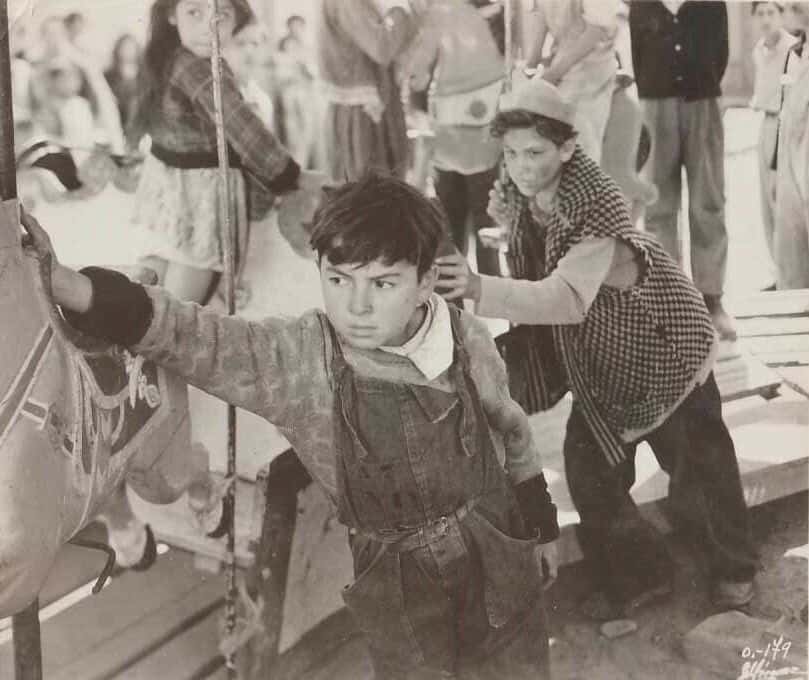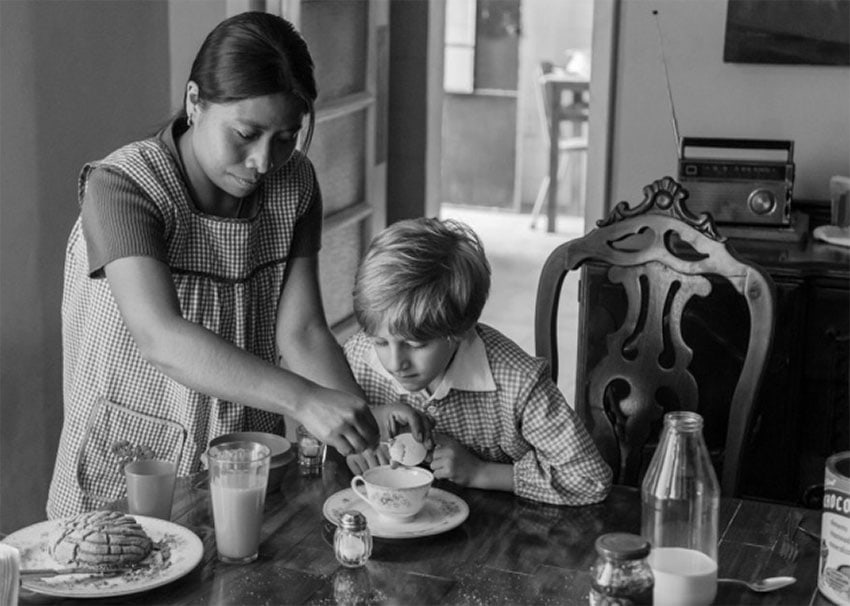There have been hundreds of movies made, books written and songs sung about Mexico’s teeming metropolis. The fact that Mexico City and its population are so hard to encapsulate or singularly categorize is what makes authors and filmmakers continue to work to find ways to express the overwhelming experience of living here.
There’s always more to discover — that’s what makes the city so fascinating — and so the list that follows is both extremely subjective and also just a fraction of what you need to understand CDMX.
While I’m fully aware that there will be those who cry foul at what’s missing, here are a few things I have read and watched that I think are excellent portrayals of the experience of Mexico City and its inhabitants.
Horizontal Vertigo: A City Called Mexico
Author Juan Villoro is a consummate chilango (Mexico City native), and while he has written extensively about his country’s politics, history and football, this book is dedicated to the capital and its particularities, idiosyncrasies and characters.
In Alfred MacAdam’s translation, Villoro takes readers through some of the most infamous elements of the capital – streetside tire shops, inner-city tianguis markets, government bureaucracy — as well as through memories from an earlier time, like when milkmen were seen as the ultimate seducers of local housewives.
This book will make you laugh and shake your head at the wonders of the country’s capital. While I can’t guarantee you’ll understand everything completely if you haven’t lived here, this is an important step on the journey.
La Capital: A Biography of Mexico City
A sweeping history of the city from before Spanish colonization up to the 1985 earthquake, Jonathan Kendall is nothing if not thorough about the city he once called home. Settling into the 600-plus-page book, even the most studious reader of Mexico City history will be surprised by the detailed compendium of information Kendall put together.
I urge anyone who plans to live here long-term to get to know some, if not all, of this important history: the presidents, revolutions and social moments that made the capital what it is today, as well as the corruption, the slums and the shimmy and shake below the surface. You’ll find yourself wishing for a modern sequel by the book’s end.
The Savage Detectives
Roberto Bolaño’s meandering tale of the Visceral Realists, a group of bohemian poets, spans several decades. Its nonlinear story is rambling, weird, delightful and surreal in Natasha Wimmer’s translation. The first part of the novel in particular gives readers a picture of life in 1970s Mexico City as its protagonists wander from back alleys to late-night cafés to house parties.
A kind of Latin American beat poet, Bolaño is also writing here about his own time in Mexico City as a young broke poet in the 1960s and ‘70s. The Chilean-born writer haunted the bookshops and cafes of the capital and residents can have fun trying to identify them in the novel, like the famous Café La Habana, which “The Savage Detectives” presents as Café Quito, where all the local intellectuals hang out.
The Migrant Chef: The Life and Times of Lalo García
Food is an essential part of the Mexico City experience, and while Mexico’s big-name chefs have taken a lot of roads to fame, few were as bumpy and chaotic as that of Eduardo “Lalo” García, Mexico’s newest megastar chef, founder and chef at Mexico City’s acclaimed Máximo Bistrot.
In researching this new biography, author Laura Tillman spent five years sitting in staff meetings, hanging out in Máximo’s kitchen and interviewing García’s family and friends to learn the story of his life.

Like many Mexicans, Lalo’s story is one that crosses borders. More than expressing a single man’s journey to fulfill his passion for cooking, “The Migrant Chef” also touches on immigrant labor, life in the restaurant world and, of course, the culinary scene in Mexico City over the last 30 years.
Battles in the Desert
A classic coming-of-age story set in Roma, now one of the city’s most popular neighborhoods. But it was once just the playground of a young boy and his flights of fancy.
A novella about a boy who falls in love with his friend’s mother and the subsequent fallout that comes from confessing his love to her one afternoon, the text is threaded through with the memories of its author, José Emilio Pacheco, one of Mexico’s favorite sons and a longtime resident of Roma’s Calle Guanajuato. Katherine Silver’s translation of this classic is a great snapshot of post-WWII Mexico and of a neighborhood that was just beginning to gain its importance in the urban fiber of the capital.
Los Olvidados (The Young and the Damned)
This is a film that every Mexican has seen and every foreigner should. A time capsule of Mexico City in an indeterminate year in the first half of the 20th century, the story follows a group of poor children living in the capital’s slums and the violence, neglect and poverty they face as part of daily life.

Probably the most important film of Spanish director Luis Buñuel’s Mexican period, the upper classes of Mexican society were scandalized by its portrayal of the city’s poverty and tried to keep the film from being shown in theaters. Some of the characters and crew even quit in protest over Mexico’s negative portrayal.
Public opinion shifted once the film started winning international acclaim and awards, but the movie is still considered a harsh, sometimes surreal look at life in 20th-century Mexico. Some famous scenes were filmed in the Roma neighborhood’s La Romita section.
Amores Perros
This incredibly dark and violent film is replete with the imagery and sounds of the dog-eat-dog capital in a way that is both heartbreaking and captivating. The second film of Gael García Bernal’s career, this movie is partly what made him into one of Mexico’s biggest movie stars; “Amores Perros” was also the directorial debut of the internationally renowned Alejandro González Iñárritu.
While its scenes of violence can be hard to stomach, this is also a layered tale of love — and dogs. Instead of slapping a bow on its connected vignettes, the movie’s ending leaves the watcher pondering the extent to which humans will go for love and revenge and how chilangos survive in the sometimes devastating landscape of their hometown.
Roma
This movie came along in 2018, in the midst of Mexico City’s tourism boom, which has maybe been felt most strongly in the Roma neighborhood. A multi-Oscar winner, “Roma” tells the story of one family and their complicated relationship with a young Indigenous woman who works as their live-in maid.

Set in 1970 and 1971, the movie’s urban scenery and the cinematography are a beautiful, sometimes drawn-out picture of life in the city during this tumultuous time. The first modern Mexican blockbuster to feature a young, Indigenous actress (Yalitza Aparicio) as its protagonist, “Roma” made waves in the Mexican film industry that rippled into the international arena, posing questions about how Mexico and its people have historically been represented in movies and how they will be in the future.
Ciudad Merced
This is a beautiful documentary of la Merced, one of Mexico City’s oldest and most vibrant neighborhoods. For 30 minutes, the viewer is transfixed by the life that overflows the edges of this incredibly layered part of the city.
With no dialogue, the music is at times ethereal, then lively or dramatic and overlaid with the sounds of the Merced: snake-oil salesmen on loudspeakers, the sizzle of frying meat on the grill, that distinctive metal trill of shop doors opening in the morning.
This film records la Merced during a single day and reframes the neighborhood away from its stereotypes of danger, dirt and poverty and instead presents its lively and complex reality. If you don’t walk away from this documentary in love with Mexico City, you never will be.
Crónica de Castas
A play on words referring to Conquest-era crónicas de Indias narratives (a generic term for the chronicles of the Spanish conquistadors in the New World) and the wordplay on the wildly racist 18th-century Spanish art genre that displayed the caste system of New Spain, “Crónica de Castas” (A Story of Castes) is a wide-lens look at the diverse class and race lines that run through one of Mexico City’s roughest downtown neighborhoods, Tepito.
If you’re not a Spanish speaker — or if it’s your second language — be prepared to miss some references due to the distinctly chilango accents and a realistic flood of slang and colloquialisms. While there are some cheesy, soap opera-y moments to this television series, it portrays so many things so distinctly chilango — the sport of frontón, diableros and life in a vecindad to name a few — that it’s worth the wade through anything slightly sappy for the Mexico City education you’ll get by watching it.
Lydia Carey is a freelance writer and translator based out of Mexico City. She has been published widely both online and in print, writing about Mexico for over a decade. She lives a double life as a local tour guide and is the author of Mexico City Streets: La Roma. Follow her urban adventures on Instagram and see more of her work at www.mexicocitystreets.com.
